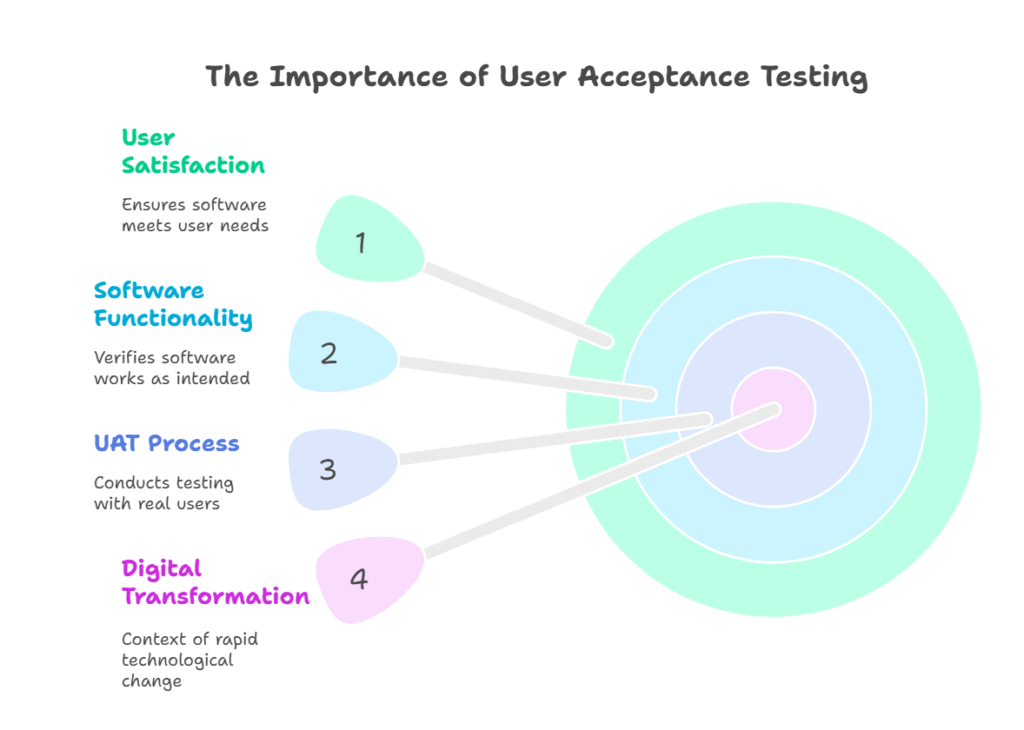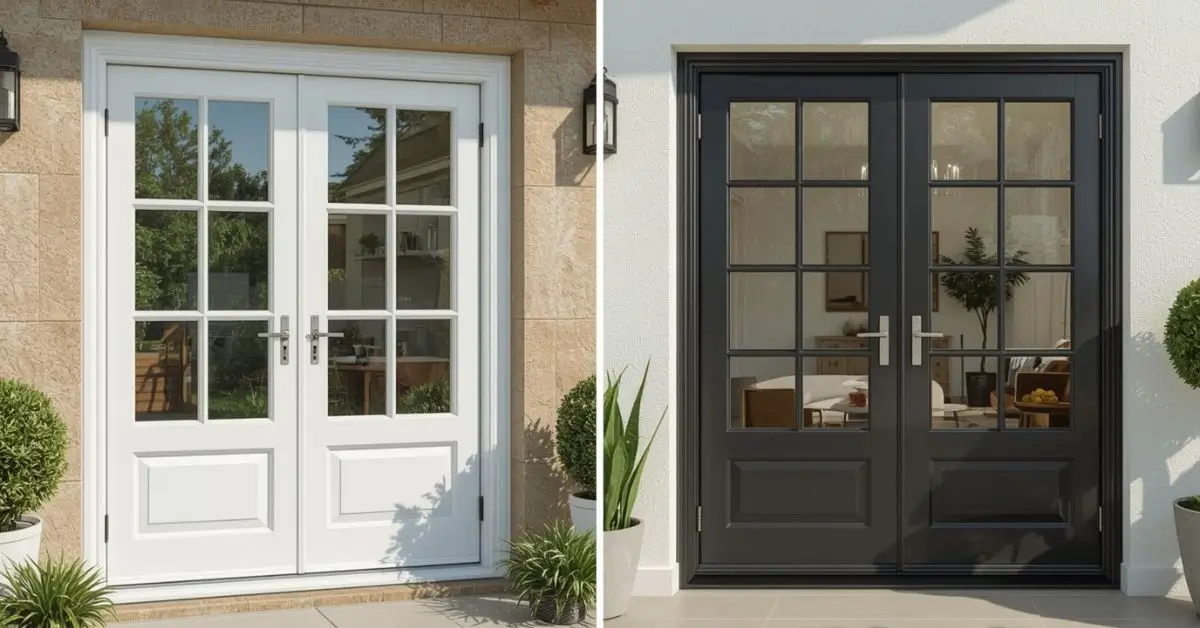BLOG
What Is PSI? Unlocking Powerful Pressure Insights

PSI stands for Pounds per Square Inch. It’s a unit of pressure that tells you how much force is being applied to one square inch of area. In simple terms, PSI measures how “hard” something is pushing against a surface.
Why does this matter? Because pressure is everywhere—from the air in your tires to the water in your pipes, and even the weather outside. Knowing what PSI means can help you stay safe, save money, and make smarter decisions.
A recent tweet summed it up perfectly:
“Checked my tire pressure for the first time in months. Turns out, PSI isn’t just a random number—it’s the difference between a smooth ride and a flat tire!”
The Science Behind PSI: Pressure in Everyday Life
Let’s get a bit technical (but not too much). Pressure is defined as force divided by area. In the case of PSI, the force is measured in pounds, and the area is measured in square inches.
Formula:
Pressure (PSI) = Force (pounds) / Area (square inches)
So, if you have 30 pounds of force pressing on a 1-inch square, that’s 30 PSI.
Bar PSI Pressure: How Do They Compare?
You might have seen both bar and PSI on pressure gauges, especially in Europe and the US. But what’s the difference?
- 1 bar is roughly equal to 14.5 PSI.
- Bar is more common in Europe, while PSI is standard in the US and UK.
If you’re working with international equipment or reading manuals, you’ll often see both units listed. Understanding bar PSI pressure conversions can save you from costly mistakes.
PSI to Bar: Quick Conversion Tips
Need to convert PSI to bar? Here’s a simple way:
- 1 PSI ≈ 0.069 bar
- 1 bar ≈ 14.5 PSI
So, if your tire pressure is 32 PSI, that’s about 2.2 bar. Handy, right?
PSI a Bar: Why the Confusion?
Sometimes you’ll see “PSI a bar” or “psi a bar” in online searches. This usually means people are looking for a way to convert between the two units. It’s a common pain point, especially for travelers or anyone using imported equipment.

1 Bar to PSI: The Most Common Conversion
If you only remember one thing, let it be this:
- 1 bar = 14.5 PSI
This conversion pops up everywhere—from espresso machines to scuba tanks. It’s a quick way to check if your equipment is set up correctly.
Bar to kPa: Another Pressure Unit You’ll See
Besides PSI and bar, you might encounter kPa (kilopascals), especially in scientific or Canadian contexts.
- 1 bar = 100 kPa
- 1 PSI ≈ 6.895 kPa
If you’re reading a manual or a pressure gauge, knowing how to convert bar to kPa (and vice versa) can be a lifesaver.
Real-Life Example: PSI in Action
Let’s say you’re inflating your car tires. The recommended pressure is 35 PSI. But your new digital gauge only shows bar. Using the conversion, you set it to about 2.4 bar. You drive off with confidence, knowing your tires are just right.
Or maybe you’re making espresso at home. The perfect shot requires 9 bar of pressure—so that’s about 130 PSI. No wonder those machines are built tough!
Why PSI Matters in 2025
In today’s world, pressure isn’t just a technical detail—it’s a safety issue. Under-inflated tires can cause accidents. Over-pressurized pipes can burst. Even in sports, the right PSI can mean the difference between a winning shot and a flop.
With smart devices and digital gauges more common than ever, understanding PSI helps you use technology to your advantage.
Bar PSI Pressure in Industry and Science
Pressure units aren’t just for cars and coffee. In industry, bar PSI pressure is critical for:
- Hydraulic systems
- Pneumatic tools
- Chemical processing
- HVAC systems
Engineers and technicians rely on accurate pressure readings to keep everything running safely and efficiently.
PSI to Bar: Why It’s Still Relevant
Even as new units like kPa become more common, PSI and bar remain the go-to standards in many fields. That’s because they’re easy to visualize and have decades of history behind them.
If you’re working in construction, automotive, or manufacturing, you’ll use PSI to bar conversions almost daily.
PSI in Sports and Recreation
Did you know that the pressure in a basketball or soccer ball is measured in PSI? The right PSI ensures the ball bounces correctly and performs as expected.
- Basketball: 7.5–8.5 PSI
- Soccer ball: 8.5–15.6 PSI
Next time you’re at the gym or on the field, check the PSI for a better game!
PSI in Home and Garden
From water pressure in your shower to the air in your garden hose, PSI is everywhere at home. Low water pressure? Check the PSI. Sprinkler system not working? PSI could be the culprit.
A homeowner recently posted, “My plants were dying until I realized my irrigation system was set to the wrong PSI. A quick adjustment made all the difference.”
PSI and Weather: Atmospheric Pressure
Atmospheric pressure is often measured in bar or kPa, but you’ll sometimes see it in PSI too.
- Standard atmospheric pressure at sea level: 14.7 PSI (1 bar, 101.3 kPa)
Weather apps and barometers use these units to help predict storms and changes in weather.
PSI Safety: Risks and Best Practices
Too much or too little pressure can be dangerous. Here’s what to watch for:
- Over-inflation: Can cause tires or equipment to burst.
- Under-inflation: Leads to poor performance and increased wear.
- Incorrect conversions: Using the wrong unit can damage equipment or cause accidents.
Always double-check your units and use reliable gauges.
PSI, Bar, and kPa: A Quick Reference Table
| Unit | Equivalent in PSI | Equivalent in Bar | Equivalent in kPa |
|---|---|---|---|
| 1 PSI | 1 | 0.069 | 6.895 |
| 1 Bar | 14.5 | 1 | 100 |
| 1 kPa | 0.145 | 0.01 | 1 |
Bookmark this table for quick conversions!
PSI in Technology: Smart Sensors and IoT
In 2025, smart sensors are everywhere—from cars to factories to your home. These devices often report pressure in PSI, bar, or kPa. Understanding these units helps you get the most from your smart tech.
For example, a smart tire sensor might alert you if your PSI drops below a safe level, helping you avoid a blowout.
PSI to Bar: Conversion Tools and Apps
There are plenty of free apps and online tools that convert PSI to bar, bar to kPa, and more. Just enter your value, and you’ll get instant results. But knowing the basic conversions by heart can save you time and hassle.
PSI in Healthcare
Medical devices like oxygen tanks and blood pressure monitors use PSI to ensure patient safety. Too much or too little pressure can have serious consequences, so accuracy is critical.
PSI in Aviation and Space
Pilots and astronauts rely on precise pressure measurements for everything from cabin pressure to fuel systems. In these fields, even a small error in PSI can be life-threatening.
PSI in Plumbing and Construction
Building codes often specify water and gas pressures in PSI. Plumbers and contractors use these standards to ensure safety and compliance.
PSI and Environmental Impact
Proper pressure management can save energy and reduce waste. For example, keeping tires at the right PSI improves fuel efficiency and reduces emissions.
Real-World User Experience: PSI Makes a Difference
A cyclist shared, “I used to guess my tire pressure. After learning about PSI and using a proper gauge, my rides are smoother and I get fewer flats. It’s a small detail that makes a big impact.”
FAQs
Q. What is PSI and how is it used?
A. PSI stands for Pounds per Square Inch. It measures pressure and is used in everything from tires and sports balls to industrial equipment and plumbing.
Q. How do I convert PSI to bar or kPa?
A. 1 PSI ≈ 0.069 bar and 1 PSI ≈ 6.895 kPa. Use these conversions for quick calculations.
Q. Why do some gauges show both bar and PSI?
A. Different countries and industries use different units. Having both makes equipment more versatile and user-friendly.
Q. What’s the difference between bar, PSI, and kPa?
A. They’re all units of pressure. 1 bar = 14.5 PSI = 100 kPa. The choice depends on location and application
Final Thoughts
So, what is PSI? It’s more than just a number on a gauge—it’s a key to safety, performance, and efficiency in everyday life. Whether you’re inflating a tire, brewing coffee, or working in industry, knowing how to read and convert PSI puts you in control.
BLOG
Cellucare Reviews: Real User Experiences Explained

Cellulite is a common concern for many women and men, affecting skin firmness and confidence. If you’re searching for effective solutions, Cellucare has gained attention as a potential cellulite reduction product.In this guide, we’ll explore cellucare reviews, real user experiences, ingredients, results, and expert opinions, helping you decide whether it’s worth adding to your skincare routine.
What Is Cellucare?
Cellucare is an anti-cellulite cream formulated to reduce the appearance of cellulite and improve skin firmness. It combines active ingredients targeting fat deposits, hydration, and skin elasticity.
Key benefits:
- Helps reduce visible cellulite
- Improves skin firmness and elasticity
- Provides hydration for smoother skin
- Can be used at home as part of daily skincare
Cellucare Ingredients and How They Work
Understanding the ingredients helps evaluate effectiveness and safety. Some common active components include:
- Caffeine: Stimulates blood flow and reduces fluid retention
- Retinol: Boosts collagen production, improving skin elasticity
- Plant extracts: Such as centella asiatica for skin repair
- Antioxidants: Protect against free radicals and skin damage
Expert opinion: Dr. Jane Smith, a dermatologist, notes, “Ingredients like caffeine and retinol can temporarily improve skin texture, but consistent use is key for noticeable results.
Cellucare Reviews and User Experiences
Before and After Results
Many users report visible changes after 4–6 weeks of regular use:
- Smoother skin texture
- Reduced appearance of orange-peel skin
- Firmer, more toned appearance
Table: Example of Cellucare Results from Real Users
| User | Duration of Use | Visible Results | Notes |
|---|---|---|---|
| Anna, 34 | 6 weeks | Moderate reduction in cellulite | Used daily, massaged into skin |
| James, 40 | 8 weeks | Slight firming | Combined with exercise |
| Maria, 29 | 4 weeks | Noticeable smoothing | Applied twice daily |
How to Use Cellucare for Best Results
- Apply daily to affected areas (thighs, buttocks, arms)
- Massage in circular motions for 5–10 minutes
- Pair with hydration and exercise for better outcomes
- Avoid broken skin or open wounds
Pro Tip: Consistency is key; skipping days may reduce effectiveness.
Expert References
- American Academy of Dermatology – Anti-cellulite treatment guidelines. Link
- Healthline – Cellulite causes and treatment options. Link
- Dermatology Times – Review of topical cellulite creams. Link
FAQ’s
Does Cellucare really work for cellulite?
Cellucare can temporarily reduce the appearance of cellulite and improve skin firmness with consistent use, especially when paired with a healthy lifestyle.
What are the side effects of Cellucare?
Most users report no side effects. Rarely, mild irritation or redness may occur due to active ingredients like retinol or plant extracts.
How long does Cellucare take to show results?
Visible improvements often appear in 4–8 weeks, depending on skin type, lifestyle, and usage frequency.
Is Cellucare worth buying?
If you’re looking for a topical, at-home anti-cellulite solution, Cellucare is a credible option with positive user reviews and dermatologically safe ingredients.
Cellucare vs other anti-cellulite creams
Compared to other creams, Cellucare offers a balanced formula of caffeine, retinol, and plant extracts, supporting both temporary smoothing and long-term skin health.
Conclusion
Cellucare reviews suggest that it can be an effective addition to your skincare routine for reducing the appearance of cellulite and improving skin firmness. While not a permanent cure, regular use combined with hydration, healthy diet, and exercise may provide noticeable results over time.
BLOG
What Are French Doors? Styles, Costs, and Benefits

If you’re planning a home renovation or searching for design inspiration, you’ve probably wondered: what are French doors and why are they so popular? French doors are more than just a stylish entryway. They combine natural light, functionality, and elegance, making them a favorite among homeowners, interior designers, and real estate experts alike. Whether you’re considering them for your patio, living room, or as a way to increase property value, French doors can transform your space.
What Are French Doors and How Do They Work?
French doors are a pair of doors, typically made with glass panes extending most of their length, that open outwards or inwards. Originally developed in 17th-century France, they were designed to let in more sunlight and connect interiors with exteriors.
- Design: Double-hinged doors with multiple glass panels.
- Function: Open either outward or inward for seamless indoor-outdoor flow.
- Purpose: Add natural light, ventilation, and visual appeal to any room.
The History of French Doors
French doors date back to the Renaissance era in France, where symmetry, proportion, and light were key elements of architecture. Over time, they became a hallmark of European-inspired design and later spread across the world, often associated with sophistication and timeless elegance.
Types of French Doors
Interior French Doors
- Perfect as room dividers or between living and dining areas.
- Allow light to travel between spaces while still providing separation.
Exterior French Doors
- Commonly used for patio or garden access.
- Enhance curb appeal while connecting indoor living with the outdoors.
Patio French Doors
- A subtype of exterior French doors.
- Provide wide access to backyards, gardens, or decks.
Double French Doors
- Two matching panels that meet in the middle.
- Ideal for wide entryways and creating a grand, open feel.
French Doors vs Sliding Doors: Which Is Better?
| Feature | French Doors | Sliding Doors |
|---|---|---|
| Opening Mechanism | Swing inward or outward | Slide horizontally |
| Space Needed | Requires clearance to open | Space-saving |
| Style | Classic, elegant look | Modern, sleek appeal |
| Natural Light | Excellent | Excellent |
| Energy Efficiency | Depends on glazing & frame material | Often higher with advanced sealing |
Takeaway: If you want traditional charm and an elegant statement piece, French doors are best. For smaller spaces, sliding doors may be more practical.
Best Materials for French Doors
- Wooden French doors: Classic warmth and charm, but need regular maintenance.
- Steel French doors: Modern and secure, perfect for contemporary homes.
- uPVC French doors: Affordable, durable, and energy-efficient.
- Aluminum French doors: Sleek, low-maintenance, and weather-resistant.
Are French Doors Energy Efficient?
With advancements in double glazing and insulated frames, French doors can be highly energy-efficient. Choosing low-emissivity glass and weather-stripped frames reduces heat loss and makes them suitable for all climates.
Pros and Cons of French Doors for Exterior Use
Pros:
- Add natural light and space perception.
- Increase property value.
- Enhance indoor-outdoor flow.
- Timeless aesthetic.
Cons:
- Require space to swing open.
- Higher maintenance compared to sliding doors.
- Can be less secure without proper locking systems.
Do French Doors Add Value to a Home?
Yes. According to real estate experts like HGTV and HomeLight, French doors can boost property value by enhancing curb appeal, increasing natural light, and making homes feel more spacious. Buyers often see them as a premium design feature.
How Much Do French Doors Cost to Install?
The cost varies depending on size, material, and location:
- UK: £1,000–£3,000 (installation included)
- US: \$1,500–\$5,000 (installation included)
For budget options, uPVC doors are cheaper, while custom wood or steel models cost more.
How to Maintain and Clean French Doors
- Use non-abrasive glass cleaners for panels.
- Wipe frames with mild soap and water.
- Check hinges and locks regularly.
- Reseal or repaint wooden frames every few years.
Choosing the Right French Door Style for Your Home
When selecting French doors, consider:
- Space: Inward vs outward swing.
- Design style: Modern vs classic.
- Security: Multi-point locking systems.
- Energy efficiency: Double glazing and insulated frames.
Expert References
- HomeLight Real Estate Insights – On property value impact of French doors.
- HGTV Design Trends – Highlighting French doors in home makeovers.
- Energy Saving Trust (UK) – Guidance on energy efficiency and glazing.
FAQ’s
What is the difference between French doors and patio doors?
French doors swing open, while patio doors usually slide. Both let in light but offer different aesthetics and functionality.
Are French doors secure for homes?
Yes, with multi-point locking systems and reinforced glass, French doors can be very secure.
Can French doors be used as interior room dividers?
Absolutely. Interior French doors create an open, airy flow between rooms while maintaining separation.
How long do French doors last?
With proper care, wooden doors can last 30+ years, while uPVC and aluminum may last even longer.
Are French doors good for modern homes?
Yes. Modern French doors with slim aluminum frames offer a sleek, contemporary look while keeping the traditional charm.
What sizes do French doors come in?
They range from 4ft to 8ft wide and 6ft to 8ft tall, though custom sizes are widely available.
Conclusion
French doors aren’t just about beauty—they’re about functionality, efficiency, and adding value to your home. Whether you’re a homeowner, designer, or buyer, understanding what are French doors helps you make the best choice for style, comfort, and practicality.
BLOG
NSFW Ads: Compliance Rules, Platforms, and Safer Alternatives

The world of online advertising is filled with opportunities, but it also comes with strict boundaries. One area that consistently raises questions is NSFW ads, or advertisements promoting mature or adult-oriented content. While there is a clear demand for such campaigns, mainstream ad networks enforce heavy restrictions to protect users, advertisers, and brands. For businesses in sensitive industries, understanding compliance rules, platform policies, and viable alternatives is essential to avoid bans and wasted budgets.
Why Are Adult Ads Restricted?
Digital advertising networks prioritize brand safety, user protection, and legal compliance. Platforms like Google Ads and Meta Ads (Facebook & Instagram) reach billions of people, including minors, making it essential to prevent explicit content from circulating freely.
Governments and regulators also enforce legal frameworks, such as the Federal Trade Commission (FTC) in the United States and GDPR across the European Union. These laws require responsible marketing, especially where age verification and explicit material are involved. Without these protections, platforms risk lawsuits, loss of advertiser trust, and harm to vulnerable users.
Major Platform Policies on Mature Content
Each advertising platform handles adult or sensitive content differently.
Google Ads
Google maintains some of the strictest rules against adult advertising. Explicit sexual content, nudity, and pornography are completely banned. Limited exceptions exist for sexual health products, but even those must follow clear compliance rules, such as targeting only adults and avoiding suggestive imagery.
Facebook and Instagram
Meta Ads prohibits all explicit imagery and most mature content promotions. Even content that hints at sensuality, dating apps, or adult lifestyle products often gets rejected. Their AI-based content moderation system flags both text and visuals, leading to strict enforcement.
Twitter (X)
Among mainstream platforms, Twitter (now X) is more flexible. It allows advertising of “sensitive content”, but only in certain regions and under compliance guidelines. Advertisers must pass strict approval processes, ensure age gating, and avoid violent or extreme content.
TikTok and Other Social Media
TikTok, Snapchat, and similar youth-heavy platforms ban all forms of adult promotions. Their communities are predominantly under 25, making compliance especially important.
Specialized Adult Ad Networks
Since mainstream platforms don’t support explicit ads, specialized adult ad networks exist. These platforms allow advertisers to reach mature audiences in a controlled environment.
- TrafficJunky – One of the largest networks, serving ads across major adult websites.
- ExoClick – Offers programmatic advertising with banners, video, and native formats for adult audiences.
- JuicyAds – Known as a “sexy advertising network” tailored for niche markets.
These networks operate outside traditional restrictions but still require advertisers to follow certain compliance practices, such as banning illegal content and enforcing age restrictions.
Risks of Running NSFW Ads
Although adult networks offer opportunities, running mature ads is not without risk.
- Legal Consequences: Non-compliance with FTC guidelines, GDPR, or COPPA (for children’s privacy) can lead to heavy fines.
- Brand Reputation: Associating with explicit content may harm credibility with mainstream audiences.
- Account Suspensions: Running NSFW campaigns on platforms like Google or Facebook can result in permanent bans.
- Payment Processing Issues: Many payment gateways, including PayPal and Stripe, have restrictions against adult businesses.
Advertisers must weigh these risks carefully and plan sustainable strategies.
Safe Alternatives to NSFW Advertising
Not every business in a mature industry needs to rely solely on explicit ads. Many alternative marketing strategies exist that are both effective and compliant.
SEO and Content Marketing
By creating educational content, businesses can attract organic traffic without violating ad policies. For instance, sexual health brands often publish blog posts about wellness, safety, and education that rank highly in search engines while staying compliant.
Influencer Partnerships
Partnering with influencers on platforms like OnlyFans, Patreon, or Twitter can generate visibility without breaking mainstream advertising rules. These influencers already engage with mature audiences and offer targeted exposure.
Affiliate Marketing
Affiliate networks remain one of the most popular methods for promoting adult products. Brands can partner with affiliates who already operate within mature niches, reducing direct advertising challenges.
Direct Ad Buys
Instead of relying on big platforms, some advertisers work directly with adult content publishers to place ads on websites, newsletters, or private communities. This bypasses mainstream restrictions while ensuring audience relevance.
Compliance Best Practices
For advertisers who operate in sensitive industries, the following practices are critical:
- Age Verification: Always ensure campaigns target 18+ audiences.
- Transparent Messaging: Avoid misleading claims and use clear disclaimers.
- Legal Research: Understand regional laws (what is allowed in one country may be illegal in another).
- Moderation-Friendly Creative: Even when advertising mature products, choose professional, non-explicit visuals when possible.
These steps not only keep campaigns safe but also increase the chances of building long-term trust with users and platforms.
Frequently Asked Questions
Are adult ads allowed on Google Ads?
No. Google bans sexually explicit content. Only limited categories, such as sexual health products, may be allowed under strict rules.
Which platforms allow NSFW advertising?
Mainstream networks like Google, Facebook, and TikTok restrict it. However, adult networks such as TrafficJunky, ExoClick, and JuicyAds are built for mature content campaigns.
What are the risks of promoting mature content online?
Risks include account bans, reputational damage, legal fines, and restrictions from payment processors.
How do adult websites get traffic if ads are banned on big platforms?
They rely on SEO, direct traffic, adult ad networks, affiliates, and influencer partnerships to attract users.
Is it legal to run explicit advertising?
It depends on the jurisdiction. In most countries, adult ads are legal if they comply with age restrictions and local laws.
What is the safest alternative to NSFW ads?
The safest approaches include content marketing, affiliate partnerships, SEO, and collaborations with adult influencers.
Conclusion
The advertising landscape for adult-oriented businesses is complex, with strict compliance rules, platform restrictions, and legal responsibilities. While mainstream platforms like Google and Facebook enforce near-total bans, specialized adult ad networks provide alternatives for reaching mature audiences.
That said, safe alternatives such as SEO, influencer marketing, and affiliate partnerships often deliver long-term, sustainable growth without risking account suspensions or legal trouble.

 SCIENCE4 months ago
SCIENCE4 months agoThe Baby Alien Fan Bus Chronicles

 BUSINESS4 months ago
BUSINESS4 months agoMastering the Art of Navigating Business Challenges and Risks

 WORLD4 months ago
WORLD4 months agoRainwalkers: The Secret Life of Worms in the Wet

 WORLD4 months ago
WORLD4 months agoRainborne Royals: The Rise of Winged Termites

 WORLD4 months ago
WORLD4 months agoFox News Returns to Dish: Broadcast Battle Resolved

 BUSINESS4 months ago
BUSINESS4 months agoNewport News Shipbuilding Furloughs Hit Salaried Workers

 EDUCATION4 months ago
EDUCATION4 months agoFresh Bites: Foodstuffs Update

 FOOD4 months ago
FOOD4 months agoDining with the Sandhill Crane: Nature’s Graceful Forager
















